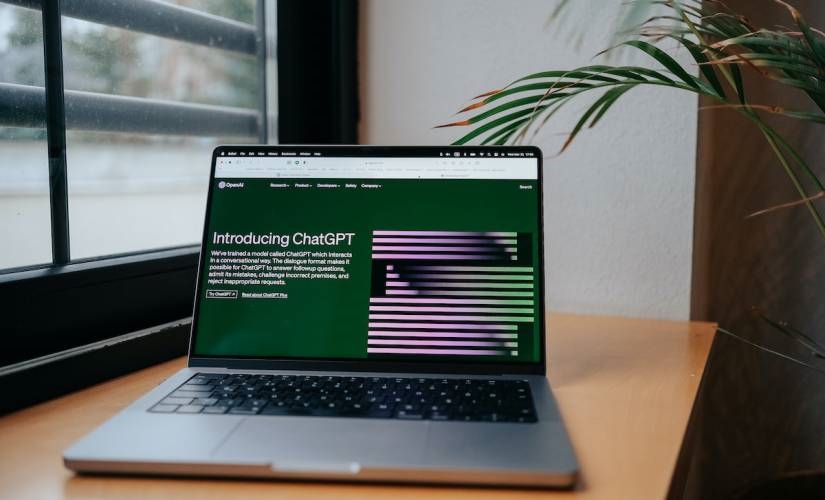3 Ways to Unlock the Potential of ChatGPT
3 Ways to Unlock the Potential of ChatGPT

2023 started with ChatGPT setting the internet on fire — a good fire, but a conflagration, nonetheless. Everyone got excited as they explored, tested, and pushed OpenAI’s artificial intelligence tool.
The program’s native ability to respond to questions and provide answers has been nothing short of extraordinary. (You’re probably wondering at this point if it even wrote this intro — which, to be clear, it did not.)
Nevertheless, ChatGPT’s ability to construct texts that read with a natural, human flow is uncanny. It’s the kind of potential that gets managers and entrepreneurs alike to sit up and pay attention.
The question is, if you’re considering using ChatGPT for your team or business, how should you put that desire into practice? Here are a few suggestions for realistic ways you can unlock the potential of ChatGPT for your business’s content needs.
1. As Always, Start With Expectations
Yes, we’re going to start with a “set expectations” primer before we get into the meat of the issue. Why? Because this is a tool where expectations are particularly relevant.
Many want to use ChatGPT as a magic bullet. Why pay salaried writers or invest tens of thousands of dollars a year into a stable of freelancers? With ChatGPT, you can get free, auto-generated texts that read better than a lot of blogs that are out there on the interweb. Who’s going to notice the difference (besides your accountant)?
But the reality is that while it’s a huge step forward, ChatGPT isn’t a comprehensive solution for text-based content creation. On the contrary, in a sense, all it’s doing is regurgitating data from the web, the same way Google has for years. In this case, the delivery is simply in a more approachable, paraphrased format.
This is helpful for readability. But it should also be a caution to those considering throwing all of their eggs into the ChatGPT basket. Writing for The New Yorker, Ted Chiang addresses this subtle weakness when he says, “The fact that ChatGPT rephrases material from the Web instead of quoting it word for word makes it seem like a student expressing ideas in her own words, rather than simply regurgitating what she’s read; it creates the illusion that ChatGPT understands the material.”
Chiang goes on to point out that this ability to repackage data doesn’t imply learning or inherent understanding, “In human students, rote memorization isn’t an indicator of genuine learning, so ChatGPT’s inability to produce exact quotes from Web pages is precisely what makes us think that it has learned something. When we’re dealing with sequences of words, lossy compression looks smarter than lossless compression.”
To put it another way, ChatGPT may be a great way to present information creatively. And there are certainly ways to use that to your advantage. But all the program is doing is repackaging pre-existing data. This doesn’t lead to high-quality final drafts. Instead, it should be used at the beginning of the creative process (more on that in a minute).
2. Inform ChatGPT if You Want It to Inform Your Readers
The other important thing to consider when unlocking the potential of ChatGPT isn’t what it can give you but rather what you’re bringing to the table. If you come with a half-baked idea or an uninformed suggestion, it can discolor the results.
Think of it in the context of working with a freelance writer. In most cases, you hire a writer because they have a knack for presenting information in a relatable and accessible manner. Unless you’re dealing with a niche situation, few hiring managers expect writers to be SMEs (subject matter experts) on the topics that they’re writing about.
They’re experts at writing. That’s why they’re helping you. If you want that arrangement to succeed, you need to ensure that they have the data required to create an informed piece of content. This can come from you. It could come from partnering them up with an SME. It could come from paying them extra to research a subject in depth. Regardless, you need to make sure they have the right information needed before you expect them to write something worth reading.
Providing Detailed Prompts
The same goes for ChatGPT. You want to present the program with thoughtful, complete prompts if you want a good result. SEO and content platform MarketMuse’s Senior Content Strategist, Stephen Jeske, speaks to this concept, “Well-structured prompts are critical to getting good output from a large language model like ChatGPT.”
Jeske adds that this process doesn’t just mean you’re including the right data points. You also need to figure out what your readers are asking by using tools like MarketMuse’s Questions Data, “Part of that involves making sure the output answers important questions — the type a reader would want answered when consuming that content. MarketMuse data, like that available in Questions, can make that happen.”
If you want to unlock the full potential of ChatGPT, you need to put in your homework first. Yes, you don’t have to compose a 500-word article on a topic. But make sure you clearly understand the information and questions that you’re trying to answer before you have the program compose any text.
3. Use ChatGPT as a Jumping-Off Point
Finally, make sure that you’re using ChatGPT as a way to kickstart the creative process, not complete it. The program’s strength lies in beginnings, not in the polished final copy.
In fact, it’s worth noting that a direct copy and paste could land you in hot water as far as plagiarism is concerned. Forbes Councils Member Nick Leighton addresses the legal concerns associated with ChatGPT’s content creation prowess by saying, “ChatGPT should be used by your creative staff to streamline their brainstorming and content creation process. This will improve your speed of content creation while ensuring unique material is being produced.”
This statement comes hot on the heels of Leighton pointing out that copying and pasting ChatGPT is “technically plagiarism,” with the author adding, “Plus, since ChatGPT leverages the internet for information, you run the risk of posting something that is too similar to its source, which can hurt your search engine rankings.”
Again, don’t treat ChatGPT as a free pass. Instead, use its abilities to streamline content creation by:
- Brainstorming topic ideas.
- Creating outlines for human writers to follow.
- At most, composing “first drafts” of text that a writer can significantly alter through editing activity.
If you can do your research, find the right questions you want to answer, and use the tool to grease the wheels of the creative process, you can unlock the potential of ChatGPT to truly impact your business. Just remember that everything starts with your expectations. Don’t treat AI as a hack. Instead, utilize it as a tool — one might even say a partner — that you can collaborate with to take your content creation to the next level.
Featured Image Credit: Photo by Hatice Baran; Pexels; Thank you.
The post 3 Ways to Unlock the Potential of ChatGPT appeared first on ReadWrite.
(29)


